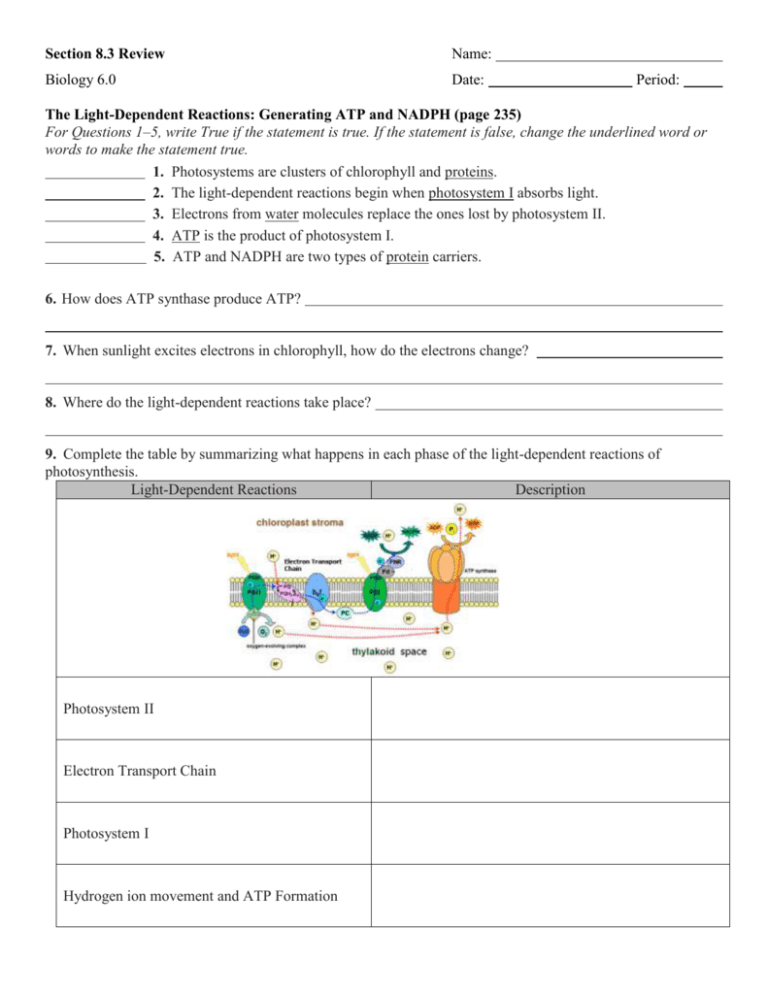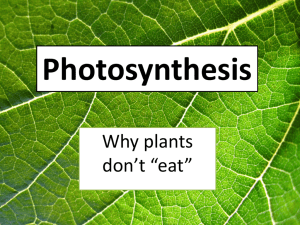Section 8.3 Review Photosynthesis
advertisement

Section 8.3 Review Name: Biology 6.0 Date: Period: The Light-Dependent Reactions: Generating ATP and NADPH (page 235) For Questions 1–5, write True if the statement is true. If the statement is false, change the underlined word or words to make the statement true. 1. Photosystems are clusters of chlorophyll and proteins. 2. The light-dependent reactions begin when photosystem I absorbs light. 3. Electrons from water molecules replace the ones lost by photosystem II. 4. ATP is the product of photosystem I. 5. ATP and NADPH are two types of protein carriers. 6. How does ATP synthase produce ATP? 7. When sunlight excites electrons in chlorophyll, how do the electrons change? 8. Where do the light-dependent reactions take place? 9. Complete the table by summarizing what happens in each phase of the light-dependent reactions of photosynthesis. Light-Dependent Reactions Description Photosystem II Electron Transport Chain Photosystem I Hydrogen ion movement and ATP Formation The Light-Independent Reactions: Producing Sugars 10. What does the Calvin cycle use to produce high-energy sugars? 11. Why are the reactions of the Calvin cycle called light-independent reactions? 12. Complete the diagram of the Calvin cycle by filling in the missing labels. Photosynthesis involves two sets of reactions. The light-dependent reactions need sunlight. They use energy from this sunlight to produce energy-rich compounds, like ATP. The light-independent reactions use these energy-rich compounds to produce sugars from carbon dioxide. Complete the T-chart. Write the phrases in the box that belong in each side of the chart. Use energy from the sun Take place in the stroma Use carbon dioxide Take place in thylakoids Produce oxygen Require water Produce sugars aka Calvin cycle Convert ADP into ATP Light-dependent Reactions Light-independent Reactions











